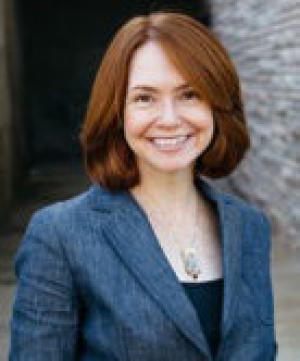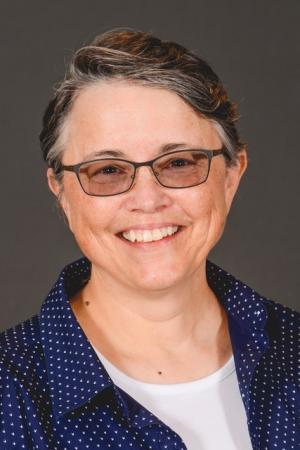Resources

Course design in online learning juggles a range of factors to produce an effective learning environment. For instance, most of us who teach online must navigate the expectations of our institution. Maybe a requirement to adhere to some external standard, like Quality Matters, exists. Perhaps the learning management system defines what one might do. Some schools require the use of a design consultant, while others throw faculty into the deep end of course development without any support. And, then, of course, we always must account for the students. I tend to boil online class structure down to the following: consistency matters, less is more, clarity in all things, and never lose the personal, and course design is never done. Consistency matters speaks to the basic principle of setting the same pattern week in and week out. The freedom of asynchronous online learning (work on your own from anywhere, anytime) differs markedly from a student knowing to turn up on specific days, at a given time, and in a set location. Many undergraduates still need the discipline built in. Setting repetitive due dates, for instance, allows a learner to integrate the class into her or his calendar and to schedule other obligations (e.g., work, childcare, recreation) accordingly. Organizing the course materials via a weekly agenda in a fixed place enables the students to know where to look for readings/videos and how to determine what to turn in, where, and by when. Less is more applies in several areas. Only the rare student will read every line of my syllabus, carefully parse my directions, or watch every video. I try to help here. Creating my syllabus using Moodle’s “Book” for example, allows me to generate a Table of Contents. Students then might skip to what they prioritize (like grading) and only refer to policies (academic integrity, disability accommodation, etc.) when needed. I also use this function for the weekly assignments. Students can bypass the learning goals the University wants posted and immediately access the readings/videos and the worksheets. Similarly, in video presentations, if I can do 2-4 minutes rather than 10 or 15, I stand a better chance of a student listening all the way through. But even when I go long, I cannot waste their time. Good video production requires thinking through what is most important, planning out my commentary and visuals, and speaking at the pace of something like a Crash Course lesson. Students then tend to stick with it and even re-view when they need a second or third shot at an idea because it is not burdensome or scattered. Clarity in all things means avoiding confusion by providing step-by-step instructions for every assignment, a rubric for how it will be assessed, links to technical support for what students might need to accomplish it (such as how to make a video), statements about when precisely to anticipate feedback, and a forum to pose their questions–again with response time being key. Online learning lacks the luxury of chatting face-to-face in class about what I want to see or how the grading is coming along. Instead, I must anticipate, as well as draw from experience, what kinds of questions students raise and plan accordingly to answer them at the outset. Never lose the personal takes me back to when I first started out in online and most of my students brought with them the expectations of a face-to-face environment. They wanted to see my face and hear my voice. They wanted not automatically graded assignments, but my personal comments. I also learned the value of students hearing from me “live” every week, even when everything might be running like clockwork. A weekly note to the class or a quick video about the connection of a current event to what we are doing reminds them I am there and active and paying attention. Sending individual feedback on something as mundane as a discussion board post says I take their ideas seriously. I also, then, get more students making appointments with me to work through issues or to chat about their interests. These interactions make use of my expertise in more areas than content delivery and that is, as we all know, where most authentic learning happens. Finally, course design is never done. Each iteration of a class teaches us something new about what works and what we can do better. Making the time to reflect on the specifics, or to learn new tricks by engaging with other faculty, brings pedagogy to the forefront and that, to my mind, always benefits the learning experience.

Teaching and learning become rich and exciting when any classroom makes room for and taps into the resources of diverse backgrounds, contexts, and identities. Also, it’s the right thing to do. When I began teaching online, I knew classroom diversities might increase due to broadening access, but I suspected student diversities could also be less visible due to the individuating and sometimes alienating aspects of technology. Yet in online contexts, foregrounding and integrating room for diversities into teaching and learning is surprisingly easier than you might imagine. Online students have more ways to participate in conversation, experience greater equity from the outset, and often exhibit deeper transparency. How can an online educator make more of diversities in a virtual classroom and tap into their teaching and learning potential? Increased access to classroom diversities was an important draw for me into online education because I teach at a theological school in the far eastern corner of Tennessee. During a 2014 sabbatical, I traveled throughout the United States, Europe, Africa, and Mexico. In many places, vital and thriving ministry was happening without good access to theological education. Many of the people I encountered would not be able to relocate to my school. I began imagining a classroom where a male, Kenyan micro-lender in the Mathare slum district of Nairobi and a Chicago-based, African American woman in urban church planting could have access to theological education and both be in the same room learning together and from one another. The kind of diversities I imagined while traveling now exist in my online contexts, and I aim to embrace them as an asset in theological education. How can online teaching and learning make room for greater diversities? Begin by welcoming student engagement that makes connections to students’ own contexts and backgrounds. Then, incentivize, encourage, and reward these connections across your course design: in opening introductions; discussion posting; student selection of readings, assignments, and projects; and integrative exercises like papers or exams. In all learning tasks and rubrics, objectives should include making resourceful connections to one’s own history, identity, or current contexts. Keep students engaged and invested while simultaneously making learning moments more tangible by emphasizing the contribution of student diversities to learning. Doing so makes diversities a more visible and constructive part of teaching and learning. Students are invited to witness connections happening in the work of their peers and are drawn to do the same. They begin to hear, learn, and feel challenged by their own and others’ diverse perspectives and orientations. Yet, I’ve learned along the way that the contours of online classroom diversities are unpredictable and can unfold in unexpected ways. For example, a white, male American student in an online course entered imagining he had no resources from his own context for theological learning. He named his rural and poor upbringing, and his ministry experience in both conservative and progressive West Virginia congregations as limitations. In response, other students helped him recognize the displacements and pressures that were indeed shaping his theological convictions. Identity in online contexts includes complex and shifting aspects of race, sexuality, trauma, geography, economics, citizenship, displacements, and more. Often, students’ own self-awareness around this multi-layered complexity is shifting in the midst of a course and in response to readings, peer-to-peer engagement, and/or assignments. Hosting spaces where students are invited to name what they are learning from their own contexts and backgrounds and from those of their peers becomes vital. Online learning tends to feel more “democratic” because it allows all learners to enter discussions under similar parameters. But online educators must be aware of persisting inequities. Safety can be heightened by using netiquette guidelines and checking in personally with students when they shift into overly aggressive or suddenly silent postures. Yet, if “democratic” means majority opinions rule, minoritized students will be susceptible to overt and subtle forms of silencing by their peers, while being more exposed and vulnerable in the process. In my experience, subtle forms of deflecting peer voices happens when students champion what they already (think they) know, rather than sharing what they are actively learning. I prioritize and reward only the latter. Surfacing diversities that already exist, and making room for more diversities, enhances learning in the online classroom. It’s risky and needs adaptive and adapting postures, a self-aware and engaged teacher, and rethinking of all elements of course design. I remind students regularly that part of our learning together is about how theological engagement and conversation becomes welcoming and constructive. In that engagement and conversation, every person is a vital and valued contributor in the process of teaching and learning. Making more of diversities enhances every potential for learning, empathy, and relevance.

One of my favorite movies growing up was the The Sound of Music. I loved—and still love—the opening scene: the vast panoramic of Julie Andrews, arms outstretched, as Maria, belting at the top of her lungs: “The hills are alive with the sound of music!” Each song and every word from the film is etched in my memory!Perhaps you, too, can recall the scene where Maria teaches the children to sing: “Let’s start at the very beginning; a very good place to start. When you read you begin with A-B-C. When you sing you begin with Do-Re-Mi, Do-Re-Mi. The first three notes just happen to be Do-Re-Mi, Do-Re-Mi, Do-Re-Mi-Fa-So-La-Te-Do!” By the end of the film, the whole family has mastered the art of singing and it leads, literally, to their freedom.Mastery comes with a solid foundation and practice; with learning the basics, making mistakes, asking questions and correcting course. Mastery requires starting at the beginning—so that a certain freedom can surface once the basics are etched in our memories—even when learning online. As teachers, we need to provide an opportunity for students to master the basics not only of content, but also of the learning environment; to develop the thought and muscle memory of working with technology. Only then can they set aside the concern of technology and truly enter into the freedom and joy of the online learning environment.The greatest support I find for students in effective online teaching is to create a “Getting Started” module for every course I build. The language and idea of “Getting Started” is owed to the training module I completed with Quality Matters (https://www.qualitymatters.org/). I keep this language because it invites engagement with the full range of students, from neophyte to novice to expert in the online learning environment. All students are invited to review the basics. Some can be skimmed over; others perhaps not. The point is: there are many notes in this environment which need to become second nature and I teach them here.A typical table of contents for such a module contains the following foundational elements: (Do) How to upload your picture to your account, (Re) How to forward school email to your personal email account, (Mi) A tour of the course site, (Fa) How to post an original thread and respond to peers in a discussion forum, (So) How to access privatized videos, (La) How to create a video using PowerPoint or Zoom, (Te) How to submit and retrieve assignments, (Do) How to access the library e-reserves and more. These foundational elements are delivered primarily via videos and PDF documents using screen images highlighted with step-by-step instructions.These supports are made available the week before class begins and remain accessible for the entirety of the course. Students are encouraged to explore this module prior to the beginning of class to learn the A-B-Cs and Do-Re-Mis of the learning environment. I also provide an opportunity for a simple online discussion and assignment submission in advance of the course start to foster some familiarity and initial comfort with these processes.This module is partially transferable from course to course, so I am not re-creating the wheel each course. Personalizing a few videos however—such as a tour of the course site—communicates my care for the current group of students.As a practice, I meet with online students individually via Zoom one or two times a semester. During these sessions, I inquire what I could do better to support their transition to online learning and also how I can continue to support their learning in this environment. Last semester I learned—unfortunately late in the game—that a number of students never learned how to use the library’s database resources. This naturally impacted the quality of their research, learning and integration. As a result, moving forward, each course will contain a video showing how to do research using the vast electronic scholarly resources available through the library system. This will find its home in the “Getting Started” module.So remember, while we grow beyond neophyte, novice and toward master teachers in the online environment, the neophyte online learner will always be with us. While students need the “Getting Started” module to varying degrees, let’s keep providing the basic A-B-Cs and Do-Re-Mis because there will always be need for some students to start at the very beginning so they can set aside the concern of technology and truly enter into the freedom and joy of the online learning environment.

The questions and challenges concerning the teaching of Islam and race that I raised last year in “Teaching Islamic Theology through Black Lives” are no less urgent and relevant now as they were then. In that contribution, I attempted to delineate ways in which I could make important interventions on race and racism in a relatively conventional course offering on Islam. The deepening consciousness and raised campus awareness over the Black Lives Matter movement has continued to spur learning interventions across campuses. One concrete way in which this has emerged here at Fairfield University is the formation and development of a Black Lives Matter course in the spring semester of 2016. Students, faculty, and staff came together to establish what is hoped to be a regularly taught course. I was able to join the second iteration of this course for the present spring semester of 2017. I took this as an opportunity to see if I could develop the converse of what I had implemented earlier, namely to teach Black Lives Matter through the lens of Islam and the experience of Muslims. This new opportunity for engagement, of course, presented a significantly different set of challenges, especially with respect to structure. Typically when I undertake a course, like my Islamic theology one, I have an incredible amount of autonomy because I serve as the sole instructor. I can plot out the content of a course, scale its pacing, and ultimately direct it as appropriate. In contrast, the Black Lives Matter course was designed from the outset to have a collaborative teaching structure. While the students enrolled in the course have a single instructor of record joining them for the duration of the course, a rotating group of University faculty and staff cycle through the classroom. On a weekly basis visiting instructors enter the classroom to offer their perspectives and share insights from their respective areas of expertise. While the diverse array of voices joining the students serve to both broaden and deepen the experience, it also entails negotiating some pedagogical hurdles. As one of the visiting instructors, rather than the instructor of record, I had to work around certain limits. As I sat down to plan out my contribution to the course, two pressing issues rose to the fore: 1) How could I navigate the challenges inherent to teaching in a rotation where my engagement with the students is limited to a single 75-minute session? and 2) How can I introduce most effectively Islam and Muslims as an important frame of analysis for the broader subject of Black Lives Matter? To spell out the difficulties of the first issue, I will enter the course in the fourth week as a newcomer and outsider whereas the students and the instructor of record will have developed by then into an ongoing and self-reflective learning community. My fellow colleagues will be facing a similar dynamic for their scheduled visitations. We will be entering as unknown entities offering ideas and starting conversations that may not be consistent with or may not bridge well with the concepts and terms previously introduced. We will have our own presuppositions and expectations. We will not be privy to the idiosyncrasies of the class. With this set of difficulties in mind, the faculty and staff contributing to the course took several steps in anticipation. First, several weeks prior to the beginning of the semester we came together for a half-day workshop. As a large group and then in smaller breakout ones, we shared our topics and approaches with one another in hopes of better understanding how the course as a whole would unfold and hold together. The syllabus was also circulated in advance so we could get in touch with those who would precede our visit and those who would follow us. We spent time as well discussing general pedagogical strategies for discussing sensitive matters related to issues of race and identity. In sum, efforts were made to prime each of us to connect with one another as we prepared to join the students for our one-time visit and to familiarize ourselves with the learning culture for this particular classroom community. With regards to introducing the relevance of Islam and Muslims to the course, I sought to build explicitly upon previously assigned materials while also providing new pieces for consideration. With respect to prior readings, I identified two pieces in particular that I thought worth recalling and reframing for the set of issues that I hoped to cover: (1) The Racial Contract by Charles W. Mills, which served as the course’s main textbook and presents an incisive critique of the ways in which white supremacy are operative politically and socially, and (2) the 2016 documentary 13th by Ava DuVernay, which explores how mass incarceration came to and continues to target disproportionately black communities. While Islam and Muslims do not figure explicitly in either exposition, I believe both works offered important windows for contemplating connections and points of intersection with the larger subject of Black Lives Matter. As for new material, I settled on the following reading: Edward E. Curtis, IV, “The Black Muslim Scare of the Twentieth Century: The History of State Islamophobia and Its Post-9/11 Variations,” in Carl Ernst, ed. Islamophobia in America: The Anatomy of Intolerance, (New York: Palgrave Macmillan, 2013), pp. 75-106. The benefit of Curtis’s contribution is that it both provides a historical overview of black Muslim American experiences while also shining a light on the ways in which black Muslim groups have been subjected to state surveillance, animus and at times suppression. A week before my visit I pre-circulated several questions for the students to consider. These questions made the task of revisiting and rethinking these earlier works more concrete and fostered a sense of continuity. Specifically, I wanted them to think back to 13th to see how they might imagine how the discourse on Islam and Muslims in America relates to the history of black criminalization and imprisonment in the United States. Furthermore, I asked them to think how the “racial contract” is at work with how Muslims are racialized presently in American society. When the day of my visit arrived, I drew explicit parallels between the country’s political discourse in the late 1970s and early 1980s over the war on crime and the war on drugs with the more recent discourse over the war on terror. I sought to illustrate the ways in which blackness and Muslimness have intersected in a number of significant ways: from the racialization of Muslims in America to the enduring place of Islam in the African American imagination, to the long historical experience of African American Muslims that includes groups like the Moorish Science Temple and the Nation of Islam, and persons like Elijah Muhammad, Malcolm X, and Muhammad Ali. Finally, we concluded by looking at the ways in which citizenship is used, even weaponized, as a means of exclusion and containment. Ultimately, working with structure of the course, I felt my time was best served by building my discussion of Islam and Muslims as explicitly and carefully as possible upon the ideas already seeded by previous readings and ongoing conversations in the Black Lives Matter course. While the visit produced a rich discussion, the need to adapt and connect is ongoing as this course and the call around which it is built moves forward.

Cláudio Carvalhaes Associate Professor McCormick Theological Seminar To teach is to create worlds. Worlds known and unknown, worlds that we will visit and be visited by, worlds that will haunt us. Worlds that we hope students will engage in many ways. Worlds that hopefully will show the ways in which

Molly Bassett Associate Professor of Religious Studies Georgia State University A week into the spring semester, the fall term seems like it was forever ago! In my last post, I talked about the informal evaluations my students took, and since writing that post, I have thought about some of the.

Molly Bassett Associate Professor of Religious Studies Georgia State University At the end of the term, I like to do three things: wrap up the class, ask students to take an informal course evaluation, and eat cookies. (These are the best ginger spice cookies on the planet. You’re welcome.) In

Nancy Lynne Westfield Associate Professor of Religious Education Drew Theological School The projects have, at sometimes, crashed and burned. There have been the occasional minor derailments. In several instances there were irreconcilable differences and un-repairable circumstances. Once I declared utter, dismal failure. On the other hand, there have also been...

Molly Bassett Associate Professor of Religious Studies Georgia State University In her introduction to Animals in the Four Worlds: Sculptures from India (1989), Wendy Doniger observes that animals and gods inhabit the borderlands of human communities, and as I mention in a piece for Religious Studies News, this notion frames...

Dr. Molly Bassett Associate Professor of Religious Studies Georgia State University I wish I could tell you exactly what I’ll be doing on the first day of my new course. But I can’t. What I can say is that the syllabus is mostly finished, and I’ve scheduled meetings with the.